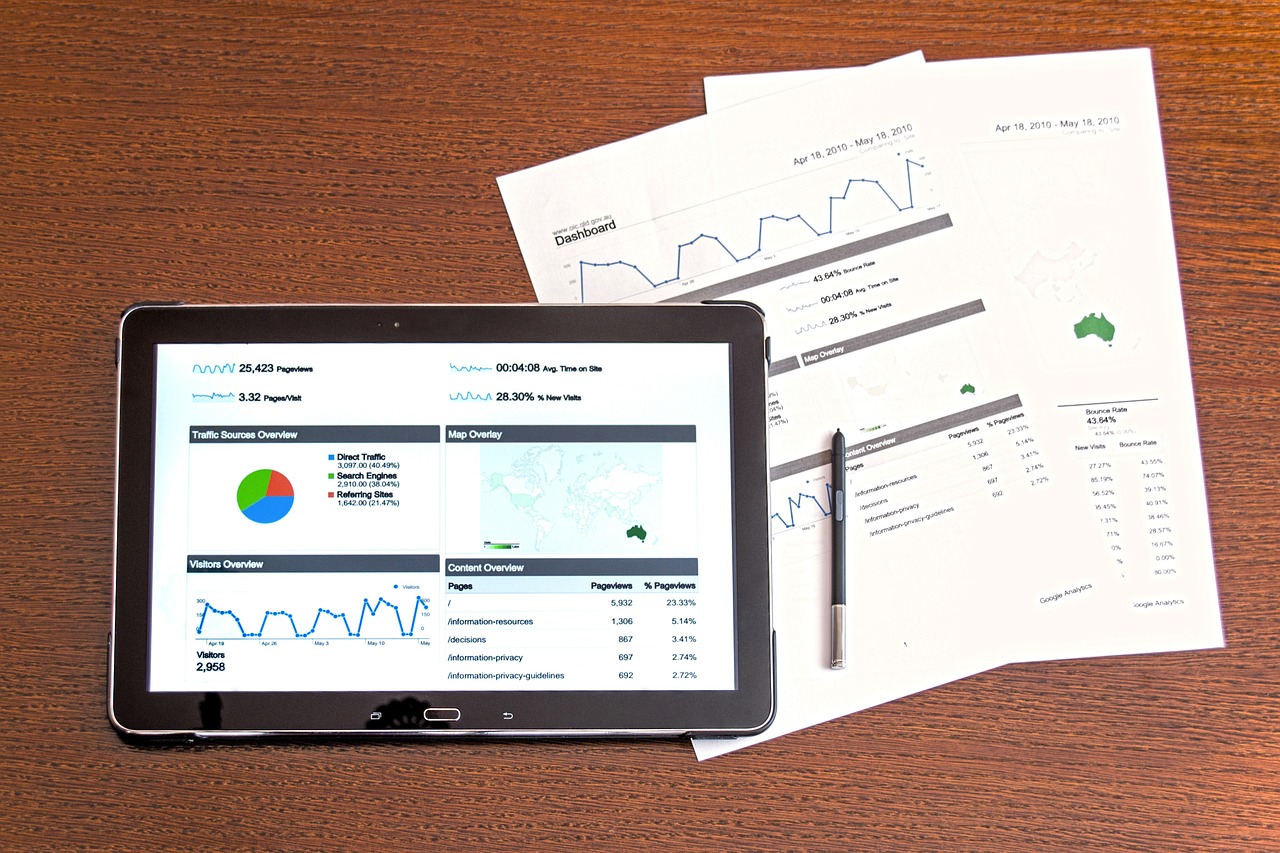BUSINESS
Maximizing Your Portfolio: How News Aggregators Can Enhance Investment Decisions

Have you ever wondered how you can stay ahead of market trends and make well-informed investment decisions? One effective tool that is reshaping the investment landscape is using advanced digital platforms. These platforms compile and present financial news from multiple sources, providing a centralized source of information crucial for timely decision-making.
These platforms are commonly referred to as news aggregators and offer a robust solution for investors. The best news aggregator ensures that users receive comprehensive and curated financial insights. This allows investors to optimize their portfolios through strategic insights. With such tools, staying updated and strategic has always been challenging.
The Role of News Aggregators in Investment Strategy
They serve a pivotal role in the investment process by providing a comprehensive view of financial news, market trends, and economic data all in one place. This centralized approach to information gathering saves investors significant time and effort, eliminating the need to sift through various information outlets and financial reports. With access to a curated stream of information, investors can quickly react to market changes and adjust their strategies accordingly.
Benefits of Integrating News Aggregators into Your Investment Routine
Integrating news aggregators into your investment routine can provide several key advantages, including:
Timely and Diverse Information Access: These platforms ensure you receive real-time global financial market updates. This immediate access to information allows investors to capitalize on opportunities as soon as they arise, which is crucial in a market where timing can significantly influence investment success.
Enhanced Decision-Making Capabilities: These tools help investors prioritize information based on their investment preferences and risk profiles. They use algorithms designed to highlight the most relevant news.
Reduction in Information Overload: The sheer volume of data can be overwhelming. They filter out the noise, presenting only the most pertinent news, which helps in maintaining focus on what truly matters for your investment decisions.
Strategies for Leveraging News Aggregators Effectively
To maximize the benefits of aggregators, investors should employ several strategies:
Set Custom Alerts: Most platforms allow you to set notifications for specific instruments, economic events, or market changes. These alerts can provide immediate updates relevant to your portfolio, ensuring you never miss critical market movements.
Integrate with Analytical Tools: Combine the insights gained from your news aggregator with other analytical tools and platforms. This integration provides a more holistic market view, combining historical data analysis with the latest information.
Regular Review and Adjustment: Regularly review these platforms’ information to ensure it aligns with your investment strategy. As markets evolve, so should your use of these tools, adapting to new information flows and technological advancements.
Potential Pitfalls to Avoid
While they are highly beneficial, they are not without their challenges. It is essential to recognize potential pitfalls and navigate them wisely:
Over-reliance on Automated Systems: While these platforms are efficient, relying solely on automated tools for investment decisions can be risky. It is vital to supplement the information from news aggregators with personal research and consultation with financial advisors.
Confirmation Bias: There is a tendency to favor information that confirms pre-existing beliefs or hypotheses. Investors should be wary of this bias and ensure a balanced view by consulting diverse sources and perspectives to support a more rounded investment approach.
When it comes to investing, staying informed is critical to success. The best news aggregator offers a strategic advantage by providing timely, relevant, and diverse information, enabling investors to make informed decisions quickly and efficiently. By understanding how to use these tools effectively and being aware of their limitations, investors can better navigate the complexities of the market and maximize their investment potential.
BUSINESS
The Role of Leadership in Shaping Modern Business Culture

Did you know that the leadership development market is expected to reach $282003.53 million by 2034? This shows the growing importance of strong leadership in today’s business world.
Leadership is more than just a title; it is essential in shaping business culture. In today’s fast-changing business world, strong leadership is key to success. Whether leading a small team or a large company, the impact is significant.
In this article, we will explore the roles of leadership that can shape culture and support long-term success. Keep reading to learn more.
Visionary Leadership
Great leaders are visionaries who look beyond today’s challenges. They focus on long-term goals and future success. This mindset helps guide the organization forward.
They set a clear direction for the team to follow. This direction aligns with the company’s goals and values. It creates a path everyone can understand and support.
When leaders share their vision, it gives employees purpose. People know their roles and how they contribute. This unity builds a strong and focused culture.
Role Modeling
Leaders help shape the culture by setting the tone. Their actions speak louder than words. Team members often follow their lead.
Strong leaders show integrity, accountability, and inclusivity. These values guide how they work each day. Their example inspires others to do the same.
A positive culture grows when leaders live the values they promote. This builds trust and unity in the workplace. People are more likely to follow when they see leadership doing the right thing.
Empowerment and Delegation
Modern leaders focus on empowering their teams. They avoid micromanaging and encourage independence. This builds confidence within the workplace.
Delegating tasks shows trust in employees’ abilities. It allows team members to grow and develop. Leaders support without controlling every step.
Empowered employees feel more engaged in their roles. They take initiative and ownership of their work. This leads to better satisfaction and higher productivity.
Fostering Innovation and Creativity
Innovation is key to staying competitive in today’s fast-changing market. Businesses must keep evolving to meet new demands. Leaders play a big role in making this possible.
Good leaders create spaces where creativity can thrive. They welcome new ideas and support fresh thinking. This helps teams feel safe to share and experiment.
When employees are encouraged to contribute ideas, great things can happen. Breakthroughs become more likely. The company also builds a strong reputation as an industry leader.
Communication and Collaboration
Open communication is essential in today’s workplace. It helps build trust and keeps everyone informed. Leaders must set the example by being clear and honest.
Feedback should flow in all directions. Leaders should listen as much as they speak. This builds a culture where everyone feels heard and valued.
Collaboration grows when communication is strong. Teams work better together and solve problems faster. Explore more insights on effective leadership at www.buildingchampions.com.
Building a Successful Modern Business Culture
Leadership is key to shaping today’s business culture. Great leaders guide with vision and lead by example. They help teams grow and succeed together.
By empowering others and encouraging innovation, leaders build strong workplaces. Good communication and a focus on diversity support lasting success. Taking these steps helps leaders create a culture where people and performance thrive.
BUSINESS
What to Expect from Professional Excavation Services

When you start a construction project, you might wonder what it takes to get the land ready. The answer often lies in the hands of excavation services. These professionals play a vital role in preparing your site for what comes next, whether it’s building a home or establishing a new road.
Understanding what to expect from these services can help reduce stress and make the entire process smoother.
The Importance of Excavation
Excavation is the process of moving earth, rock, or other materials to prepare a site for construction. Without this crucial step, your project could face many issues down the line.
For instance, a properly excavated site ensures that the foundation is strong and stable, which is essential for the safety of any structure built on top. The experts in excavation services understand the land and what needs to be done to make sure everything is just right.
What Professionals Bring to the Table
Hiring excavation professionals means you receive the benefit of their experience. These experts know how to assess the land, identify potential problems, and execute a plan to deal with them effectively. Their skills help avoid complications that can occur without proper preparation.
They will examine the soil types, look for rocks or other obstacles, and understand the water drainage patterns. All of this information is crucial for ensuring that your project progresses without a hitch.
Types of Excavation Services
Different projects require different kinds of excavation. Here are a few common types that professionals provide:
Site Preparation
This includes clearing the land to make way for construction. It’s important to remove trees, bushes, and other debris to create a clean slate for the builders. Site prep in Montana is essential if you want to ensure that the environment is ready for your project’s specific needs.
Trenching
This type involves digging narrow trenches to install utilities like water pipes, sewer lines, or electrical cables. This process must be done with precision to avoid damaging existing utilities.
What to Expect During the Process
When you work with excavation services, the process generally unfolds in several steps. Professionals will conduct an assessment of the site. They look for any potential barriers, such as rocks or high water tables, that could affect the excavation.
Once they have a clear picture, they will provide you with an outline of the work that needs to be done. With their expertise, you can reduce stress and confidently move forward with your construction plans.
The team will gather the necessary equipment, including diggers and backhoes. Safety is always a priority, so they will often set up barriers to keep the work area secure. If there are any neighbors nearby, they may inform them about the work schedule to minimize disruptions.
Cost Considerations
While you may be eager to start your project, it’s essential to think about the costs associated with excavation. Prices can vary based on the size and complexity of the job.
Factors include the amount of dirt that needs to be moved, any materials that need to be removed, and the type of machinery required. By discussing your budget with professionals upfront, you can find ways to work within your limits without sacrificing quality.
Getting Help From Professional Excavation Services
Understanding what to expect from excavation services not only prepares you for the process but also helps ease your mind. The professionals involved play an important role in building a safe and sturdy foundation for your project. Reach out to excavation services today, and get ready to see your project take shape!
BUSINESS
Quality Renovation Services Tailored to Your Needs

Are you dreaming of a home makeover that truly fits your lifestyle? Many homeowners want more than just a change in looks; they want a space that works better for their daily life. That’s why finding a renovation service that listens to your needs is so important.
Quality renovation is more than paint and tools; it’s about personal care, skilled hands, and smooth project flow. What should you expect from a service that truly puts your needs first? Let’s take a closer look.
Personalized Plans That Reflect Your Vision
Great renovation starts with understanding your goals. Professionals take time to hear your ideas and make suggestions that suit your space and style. Whether it’s a kitchen update or adding more natural light, your vision guides every step.
With the right team, your home can be both beautiful and practical. Personalized design planning ensures you won’t have a cookie-cutter result but a space made just for you.
Attention to Detail in Every Design
Every home is different, so the best renovation services focus on the little things. From choosing the right tiles to picking the best lighting, details make a big impact. Skilled designers help balance your wants with smart design choices that fit your budget.
This is especially important in high-value areas like bathroom renovations in downtown Toronto, where space and style both matter. A well-thought-out design brings long-term satisfaction.
Skilled Craftsmanship That Lasts
High-quality work comes from experienced hands. Whether it’s carpentry, flooring, or plumbing, good craftsmanship ensures your home is safe, solid, and stylish.
Trained professionals use the right tools and techniques for every task. This means fewer future repairs and longer-lasting results. When the job is done right the first time, your home looks great and works even better.
Seamless Project Management From Start to Finish
Renovation doesn’t have to be stressful. A well-managed project keeps things on time and within budget. Teams that handle permits, orders, and schedules make your life easier. You’ll always know what’s happening and when.
Strong communication helps prevent delays and surprises. With smooth execution, your renovation stays on track and ends with a result you’ll be proud of.
A Team That Respects Your Space
A good renovation team knows they’re guests in your home. They work neatly and safely, cleaning up each day and protecting your belongings. This respect builds trust and comfort throughout the process.
Friendly, helpful workers make all the difference. A respectful team turns a messy job into a pleasant experience, showing care for both your space and your time.
Find The Best Quality Renovation Services for Your Needs
Choosing the right renovation team can completely change how your project feels and turns out. When services are tailored to your needs, the process becomes smooth, clear, and even exciting. With custom designs, strong craftsmanship, and great project flow, you can turn your house into the home you’ve always wanted.
Every step should reflect your style and needs. When you trust professionals who listen and deliver, the results truly stand the test of time.
Want more inspiration? Check out our blog for more tips, ideas, and guides on other helpful home topics!

 Cartoon1 year ago
Cartoon1 year agoUnlocking the Potential of Nekopoi.care: A Comprehensive Guide

 Game1 year ago
Game1 year agoExploring Aopickleballthietke.com: Your Ultimate Pickleball Destination

 BUSINESS1 year ago
BUSINESS1 year agoWhat Companies Are In The Consumer Services Field

 BUSINESS1 year ago
BUSINESS1 year agoUnraveling the Mystery of 405 Howard Street San Francisco charge on Credit Card

 HOME IMPROVEMENT1 year ago
HOME IMPROVEMENT1 year agoVtrahe vs. Other Platforms: Which One Reigns Supreme?

 TECHNOLOGY1 year ago
TECHNOLOGY1 year agoThe Guide to Using Anon Vault for Secure Data Storage

 ENTERTAINMENT11 months ago
ENTERTAINMENT11 months agoUnderstanding Bunkr Album: A Comprehensive Guide

 ENTERTAINMENT1 year ago
ENTERTAINMENT1 year agoThe Epic Return: Revenge of the Iron-Blooded Sword Hound
















